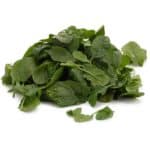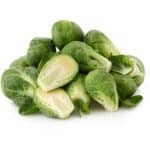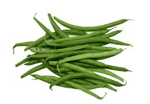
Classic winter recipes such as soups, stews and curries offer us comfort and nourishment during the cooler months. During the shorter, darker months, our bodies respond best to a nutrient-rich yet well-balanced diet, in order to support immune function and help with overall energy levels.
It is therefore a time to celebrate seasonal fresh produce including citrus fruits, bananas and apples as well as root vegetables and leafy greens to name a few household favourites.
It is completely natural to crave more hearty and warming meals during a Canberra winter. I am sure you can imagine that our jobs as dietitians gets a bit difficult when we recommend making nourishing salads full of super-foods* (*super in the way that they contain many nutrients to support health, not in a way that they possess actual superpowers).
Our cravings tend to be quite seasonal and as the weather gets warmer, only then do our salads return to lunch boxes and dinner tables across the region. However, with an influx of vibrant winter produce comes an opportunity for different salad creations that you might like to try: Warm Winter Salads!
The recipe for success:
To build a satisfying winter salad, you shouldn’t have to sacrifice enjoyment or taste as a result of making that transition from your current go-to hot meals. Focus on what you enjoy eating, what can be easily transported, what methods of cooking are best for you, what will make you feel energised and most importantly, what is in season to be the most-cost effective.
As a rule of thumb, make sure your salad includes a good foundation of vibrant vegetables, a source of complex carbohydrates, lean protein, and some healthy fats.
Our bodies love variety, so try different combinations with lots of delicious winter wholefoods and ingredients.
Here is how to get your salad fix all year long:
Start with a base:
 Mixed greens such as lettuce, spinach, kale and/or rocket are a great foundation for any salad creation. Containing a variety of nutrients such as iron, vitamin C and folate as well as antioxidants to support immune function, hardy greens as a salad base provide us with many health-related benefits (as well as the opportunity to get us closer to those five daily serves of vegetables!).
Mixed greens such as lettuce, spinach, kale and/or rocket are a great foundation for any salad creation. Containing a variety of nutrients such as iron, vitamin C and folate as well as antioxidants to support immune function, hardy greens as a salad base provide us with many health-related benefits (as well as the opportunity to get us closer to those five daily serves of vegetables!).
Eat the rainbow:
 Next add your chosen vegetables cooked in whatever methods are most convenient and tasty for you. This can range from roasting, steaming, blanching, air-frying all the way through to fresh. Additionally, in terms of seasonal vegetable produce, here are some typical winter veggies to try and include more of:
Next add your chosen vegetables cooked in whatever methods are most convenient and tasty for you. This can range from roasting, steaming, blanching, air-frying all the way through to fresh. Additionally, in terms of seasonal vegetable produce, here are some typical winter veggies to try and include more of:
- Carrot and celery
- Pumpkin
- Garlic, onion, swede and leek
- Silverbeet
- Zucchini
- Cauliflower and broccoli
- Brussel sprouts and cabbage
- Green beans

 Try to include at least 2-3 different vegetables in your salad and remember that more colour equals more nutrients.
Try to include at least 2-3 different vegetables in your salad and remember that more colour equals more nutrients.
Pick your protein:
Try to bulk out your salad with a serving of lean protein to help manage appetite and to keep you feeling fuller for longer. Protein-rich foods such as lean red meat, poultry, fish, eggs, tofu, legumes, or cheeses will not only provide you with protein but will also provide you with other nutrients including B12, iron, zinc, and calcium.
Clever carbohydrates:
 Dietitians may sometimes be considered as ‘carb pushers’. We have valid reasons for this!
Dietitians may sometimes be considered as ‘carb pushers’. We have valid reasons for this!
Carbohydrates are the main source of fuel for our brain and muscles to keep us going throughout the day.
Although limiting processed carbohydrates is a good idea, we need to be clever with our carbohydrate choices for our salad creations and aim to include more complex, wholegrain-based options.
Here are a few ideas which can be served cold or alternatively warm for that added comfort factor:
- Sweet potato or potato
- Quinoa, buckwheat, or barley
- Brown or wild rice
- Couscous
- Wholemeal pasta or noodles
- Legumes, beans, or lentils (if blood glucose control is a factor these are considered as carbs, even though they are also protein sources)
Healthy fats:
 Adding a source of healthy fats to your winter salad is the key to ensuring it is makes you feel full. Avocado, nuts and seeds, extra virgin olive oil, oil-based dips or dressings and various cheeses provide our bodies with fat-soluble vitamins including A and E which are vital for good health.
Adding a source of healthy fats to your winter salad is the key to ensuring it is makes you feel full. Avocado, nuts and seeds, extra virgin olive oil, oil-based dips or dressings and various cheeses provide our bodies with fat-soluble vitamins including A and E which are vital for good health.
Get Fresh Food Delivered to Your Door!
If you’re a Canberra and surrounds resident, you can grab the all the ingredients for these ideas from our friends at Alpha Fresh and they’ll deliver them straight to your door. You can get fruit, vegetables, bread, meat, poultry, seafood and more.
My approach to winter wellness:
Give yourself time to adjust and to figure out what winter salads are going to work best for you. Remember, whatever works for you is going to be different for the person next to you. Increasing your health consciousness is essential when wanting to improve your nutrition habits.
Encouraging progress, however, is equally important. Remind yourself that it is a lifestyle change and not another quick fix. This will give you that motivation to take care of your body throughout winter and beyond.
Below is the link to one of my personal favourites, a Falafel and Black Bean Salad with the delicious addition of tzatziki. Enjoy, stay safe and take care of yourselves.



